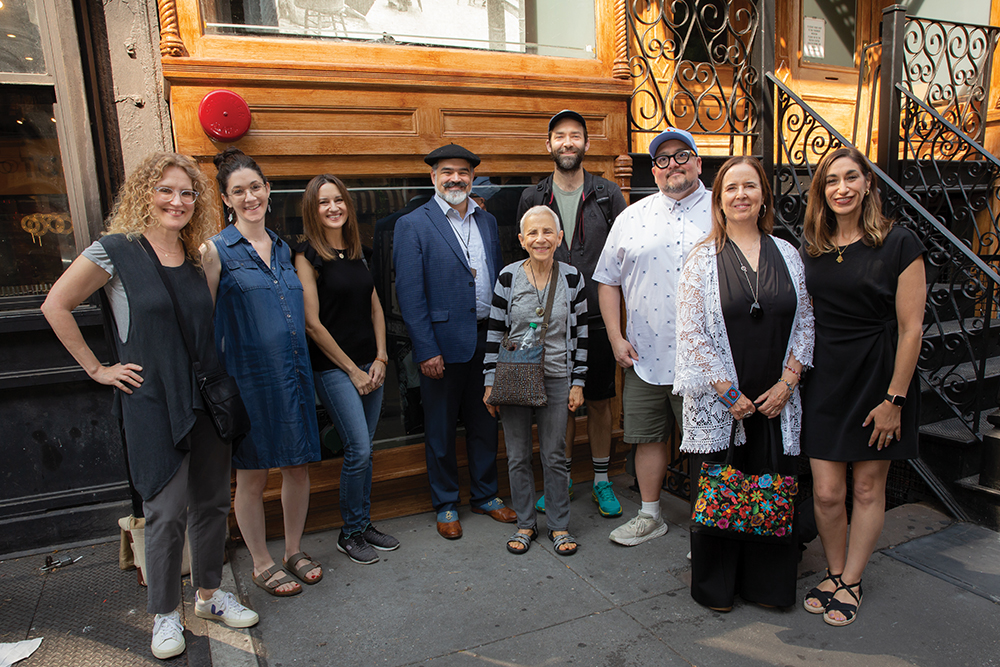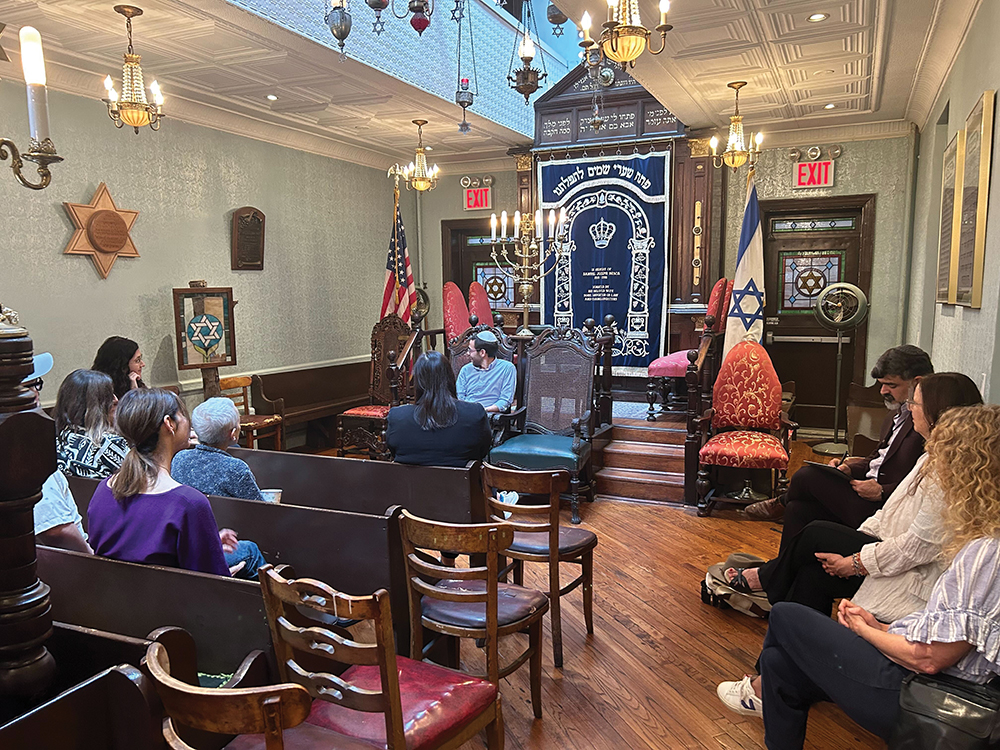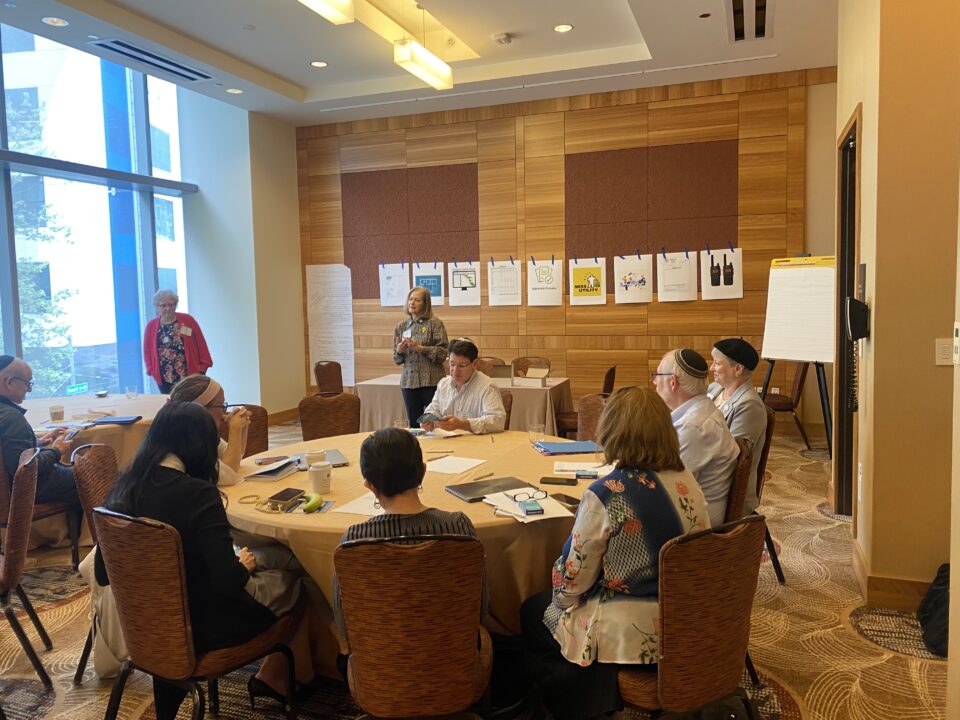
Spring 2025 Samis Board Announcements
May 29, 2025
Samis Announces Over $1 Million in New 2026 Grants to Israel
July 11, 2025A new PJ Library initiative aims to celebrate the breadth of Jewish experience.
By Naomi Pefferman
This story originally appeared in the summer 2025 issue of PROOF, a PJ Library magazine.

The Sephardic Stories Initiative cultivates authors as they craft Sephardic- and Mizrahi-inspired childrenʼs books.
PHOTO BY ELIZABETH KORELITZ
Author and filmmaker Arnon Z. Shorr has long wanted to write a middle-grade adventure saga inspired by the fraught experiences of his mother’s Libyan Jewish family in Tripoli after World War II.
“It’ll be a coming-of-age graphic novel that weaves in both the history of that community and also Libyan Jewish folklore and mythology,” Shorr says. “It’s a really fascinating period of history; there was a lot of chaos and upheaval. I didn’t grow up around family members who lived through it, and I wanted to connect with that.”
Shorr’s idea is one step closer to reality thanks in part to a new PJ Library initiative to uplift Sephardic and Mizrahi narratives in Jewish children’s literature. The Sephardic Stories Initiative, launched in late 2023, is designed to cultivate authors of Sephardic and Mizrahi tales over three years of virtual workshops, in-person gatherings, and mentorship. The goal? To inspire excellent new books that reflect the vibrant diversity of the Jewish people.
“We heard from many families, authors, and publishers how Ashkenazi-heavy PJ Library’s content was,” says Patrick Coyle, PJ Library’s author and illustrator stewardship coordinator. “Sephardic families want to see themselves represented more in our books, and others want to learn more about Jewish families they aren’t necessarily familiar with.”
Naomi Shulman, managing editor of PJ Publishing, agrees. “There’s a chronic underrepresentation of Sephardic stories in the publishing world, and that’s something we’ve identified as a need for a long time,” she says.
Representation matters to readers. When PJ Library surveyed subscriber families last year, some 72% of Ashkenazic families said characters in PJ Library books looked like their family; only 58% of Sephardic and Mizrahi families (whose kin lived in the Middle East and North Africa) felt the same. Families that reported seeing more characters that looked like their family also reported greater impact — they were more likely to say that PJ Library helped them build confidence, served as an important parenting tool, and inspired them to attend local PJ Library events.
The Sephardic Stories Initiative is one way PJ Library is working to reduce this disparity. With generous funding from the Samis Foundation, PJ Library is actively expanding its lineup so that every Jewish child can see themselves, and learn about others, in the stories they read.

Authors toured the historic Kehila Kedosha Janina Synagogue and Museum in New York City with Ethan Marcus, managing director of the Sephardic Jewish Brotherhood of America.
PHOTO BY PATRICK COYLE
During year one of the initiative, PJ Library convened a cohort of seven experienced children’s book authors of Sephardic or Mizrahi background. The group began developing story ideas in virtual workshops as well as at a September in-person retreat in New York City. Highlights of that gathering included a visit to the Tenement Museum, where the authors interacted with an actress portraying a Sephardic immigrant. The retreat also featured a tour of the historic Kehila Kedosha Janina Synagogue and Museum, the only Romaniote synagogue in the Western Hemisphere.
Now in the initiative’s second year, the first group of authors has begun mentoring a new group of 14 emerging writers as they craft their own Sephardic- and Mizrahi-inspired manuscripts for publication.
“The Samis Foundation is excited to be involved in this groundbreaking initiative to expand PJ Library’s Sephardic offerings,” says Samis Foundation CEO Connie Kanter. “By supporting authors and increasing the number of Sephardic stories in the PJ Library canon, PJ Library is providing Jewish children and their families with an opportunity to learn about Sephardic Jewish culture and history — and the rich tapestry of Jewish life.”
Shorr’s graphic novel José and the Pirate Captain Toledano, which follows a Jewish pirate and a young Jewish stowaway fleeing the Spanish Inquisition, was added to the PJ Our Way lineup for tweens ages 9-12 in 2022. As a participant in the Sephardic Stories Initiative, Shorr says he appreciates the chance to dig deeper into his new story idea. The Tripoli narrative “had animated me before, but I felt I couldn’t do anything with it until the PJ Library initiative created a context in which I could explore it,” he says.
For Gail Carson Levine, author of the bestseller Ella Enchanted and some 25 other books, the initiative offers a way to further connect with her Sephardic heritage. Her father was born in Thessaloniki, then known as Salonika, where his mother died giving birth to him; he was orphaned by age 6 and lived until 16 in the Hebrew Orphan Asylum, an Ashkenazic institution in New York. “I’ve inherited my father’s separation from being Sephardic,” Levine says.
For the Sephardic Stories Initiative, she is adapting a Sephardic folktale about a grandmother who saves her community from starvation. In Levine’s version, the protagonists are “a boy, a girl, and the mischievous wind, which narrates the tale,” she shares.
“All Jews are a very small portion of humanity, and Sephardic Jews are a small sliver of that,” she says. “So we are a sliver of a sliver, and preserving that means a lot to me.”
Hannah S. Pressman, director of education and engagement at the Jewish Language Project and cofounder of the American Ladino League, is an emerging writer who since her 20s has delved deeply into her ancestors’ history in Turkey and the island of Rhodes.
As part of the initiative’s second cohort, Pressman was selected from some 70 applicants who submitted writing samples. She hopes to develop a story inspired by an elderly friend who grew up in Seattle’s historic Sephardic community, as well as modern fairy tales based on her visits to Rhodes.
“Even though I have lots of different writing muscles that I’m comfortable flexing, I have not had specific training in writing children’s literature,” Pressman explains. “One draw [of the Sephardic Stories Initiative] for me is getting that mentorship and training in this genre from people whose craft it is.”
Participating in the program is an emotional experience for Pressman. “There are so many stories about Sephardic history and language that need to be told,” she says. “I want kids who are lucky enough to be PJ Library subscribers to experience all these different Jewish landscapes and languages.”




